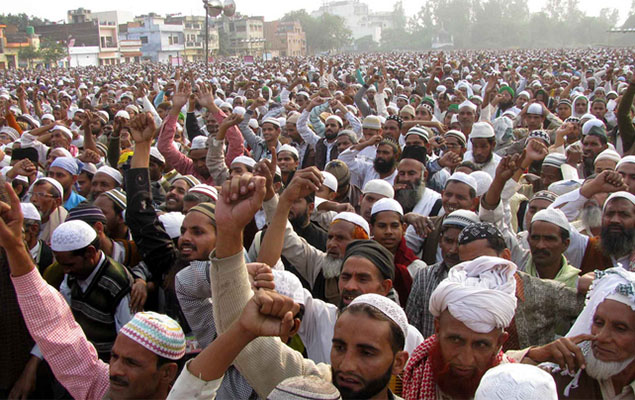
The movement of marginalized Muslims was for a dignified existence - Picture courtesy ummid.com
"Our Forefathers Made the Right Decision & We Applaud Them for Their Revolutionary and Brave Act"
By Dr Aslam Abdullah
CA

Not all Muslim Indians trace their biological roots to Arabia, Central Asia, or Persia. But, like many Hindus, Buddhists, Jains, Sikhs, Dalits, Christians, or Sanatan Dharmis claiming to be Indians, they were the country's original inhabitants, who belonged to the pre-Dravidian aborigines, the ancestors of the present tribals or Adivasis (Scheduled Tribes).
The Aryans arrived in India between roughly 2000 BCE and 1500 BCE. They were Central Asian Steppe pastoralists. They spoke Sanskrit, an Indo-Aryan dialect, originating as Vedic Sanskrit as early as 1700-1200 BCE.
Brahmans identify the Vedas, meaning knowledge, as their oldest book. They represent the ancient Indo-Aryan culture of the Indian Subcontinent that began as an oral tradition. According to tradition, Vyasa is the compiler of the Vedas, who arranged the four kinds of mantras into four Samhitas.
Manusmriti is a sacred scripture attributed to Brahma, the creator, who passes it on to the first human, Manu, who passes it on to the first teacher, Bhrigu, who passes it on to other sages. Since its composition, the upper castes consider it as the foremost dharma-shastra, overshadowing all other law books.
The invaders described them as Aryans and forced the natives to accept a hierarchical system based on their ideas, which they attributed to imaginary and mythological deities and sages. For thousands of years, the natives suffered inequalities under a pseudo-religious narrative promoted by the power elites.
From time to time, people challenged the narratives perpetuated by the power elites known as Brahmans. Buddha is one of them. Buddhism developed in reaction to Brahminism. But unfortunately, its followers paid a heavy price for their revolt.
Following the path of Buddha and many like him, hundreds and thousands of marginalized tribals, people consigned to the lowest levels of human existence, and conscientious humans responded to the call of egalitarianism introduced by Arab merchants. Islam became their religion. Most Muslims in the Indo-Pak- Bangladesh subcontinent are descendants of the early revolutionaries and visionaries; the power elites violently responded to them.
Early Indians' quest for equality continued even after they accepted Islam. The new power elites comprised tribes and races which, at the instance of local upper caste rulers, had intervened in their disputes against each other.
Many local power elites compromised with the new power elites, perpetuating the old hierarchies and racial superiority. Some converted to the religion of the new elites. Others adapted their style of life for political expediency.
The movement of marginalized Muslims was for a dignified existence; It was a revolt against an ideology that misused the name of imaginary deities to institutionalize inequality based on birth.
The descendants of earlier Muslim Indians could not follow in the footsteps of their forefathers. They revived the old hierarchies against their creed and indulged in discrimination. The plight of Dalits and tribals is a living testimony.
Muslim Indians should proudly own the decision of their predecessors and say loudly and clearly, "Our forefathers made the right decision, and we applaud them for their revolutionary and brave act."
An effective way to pay tribute to their ancestors is to help uplift the downtrodden. Sixty-eight percent of Indians identify themselves as members of lower castes, including 34% who are members of either Scheduled Castes (SCs) or Scheduled Tribes (STs) and 35% who are members of Other Backward Classes (OBCs) or Most Backward Classes.
(Dr Aslam Abdullah is a resident scholar at Islamicity.org and editor-in-chief of the Muslim Observer newspaper. He is also the Indian Islamic Heritage Project director of the American Federation of Muslims of Indian origin and the interim President of the World Council of Muslims for Interfaith Relations, WCMIR.)

